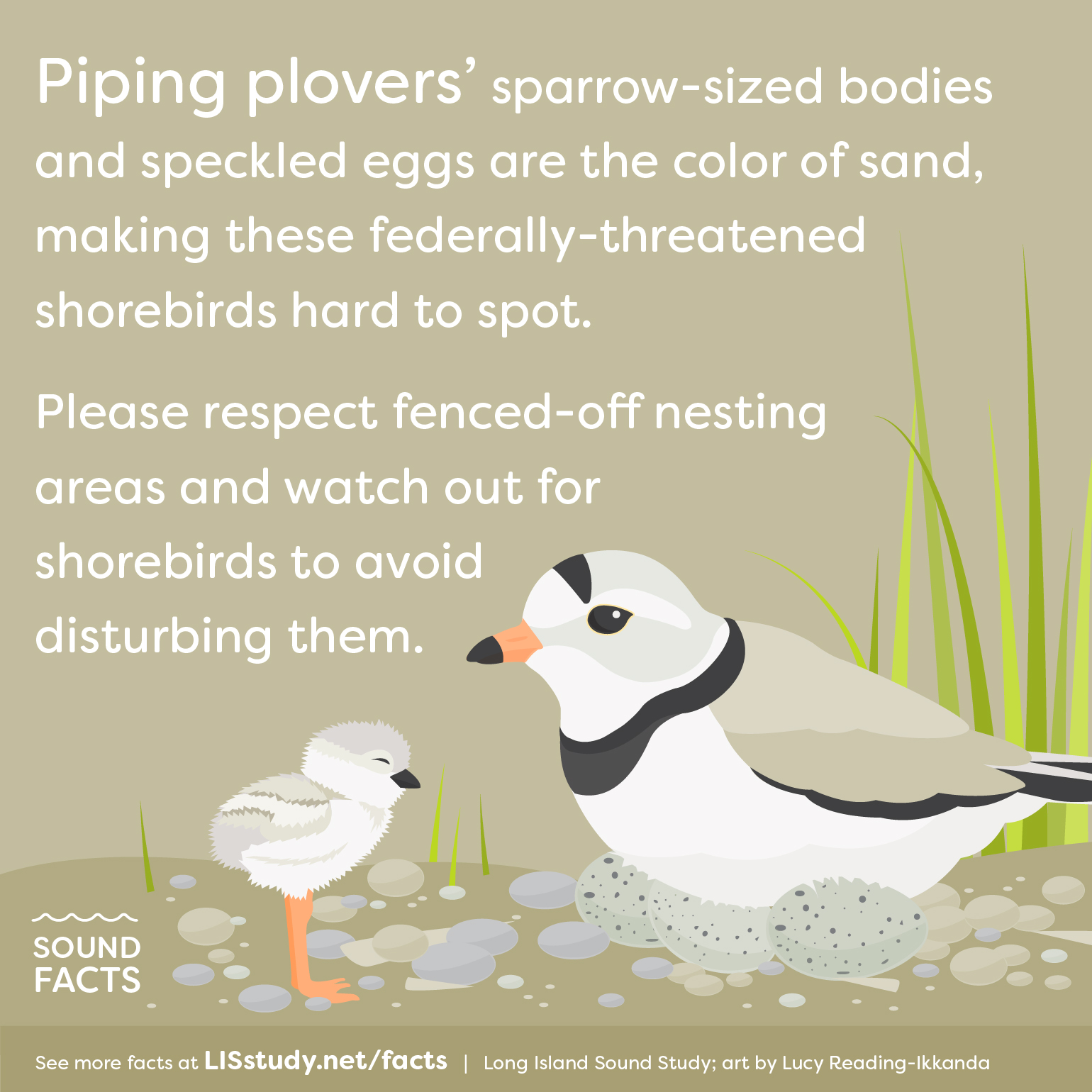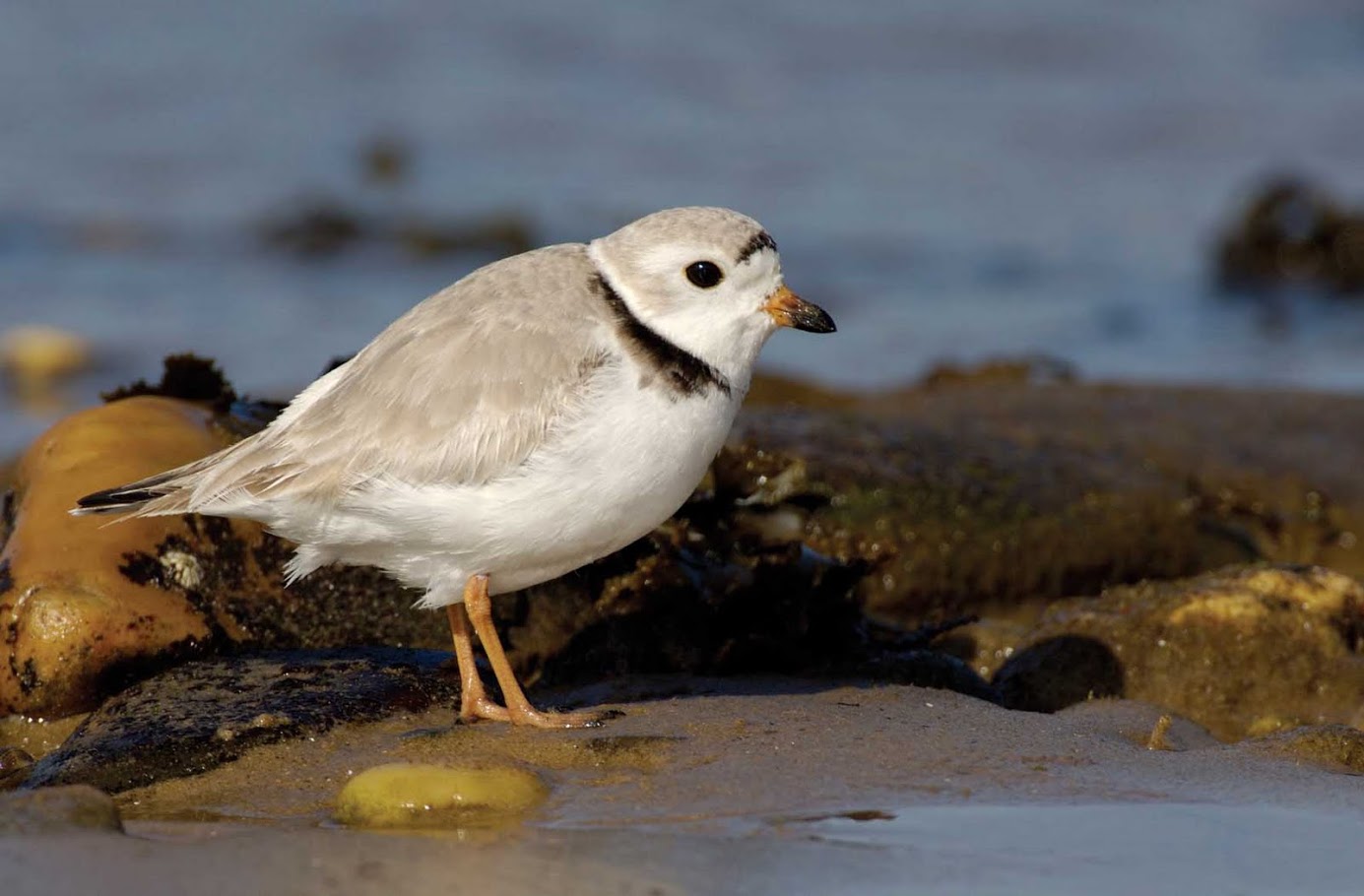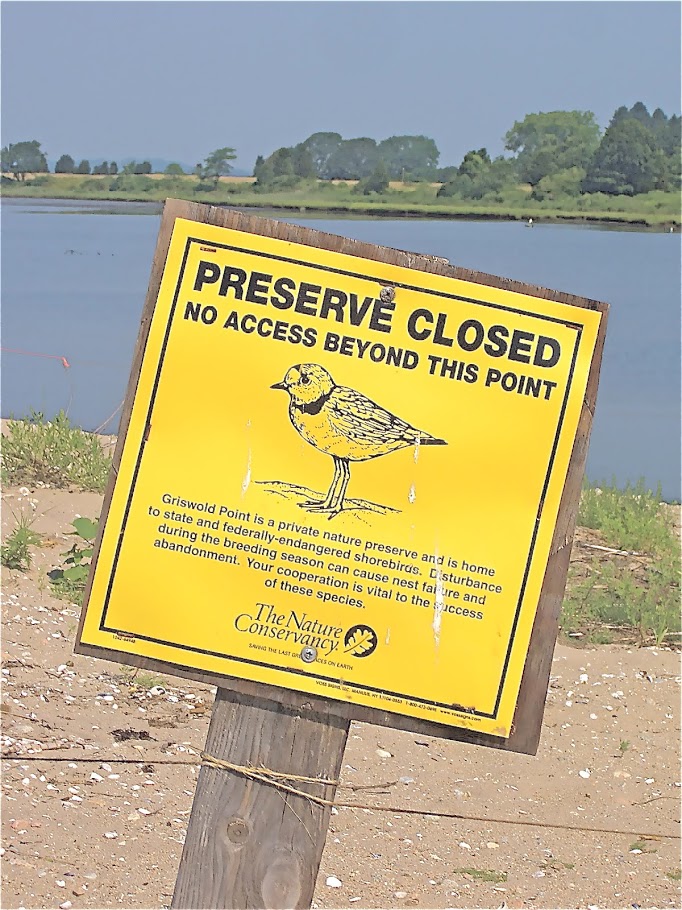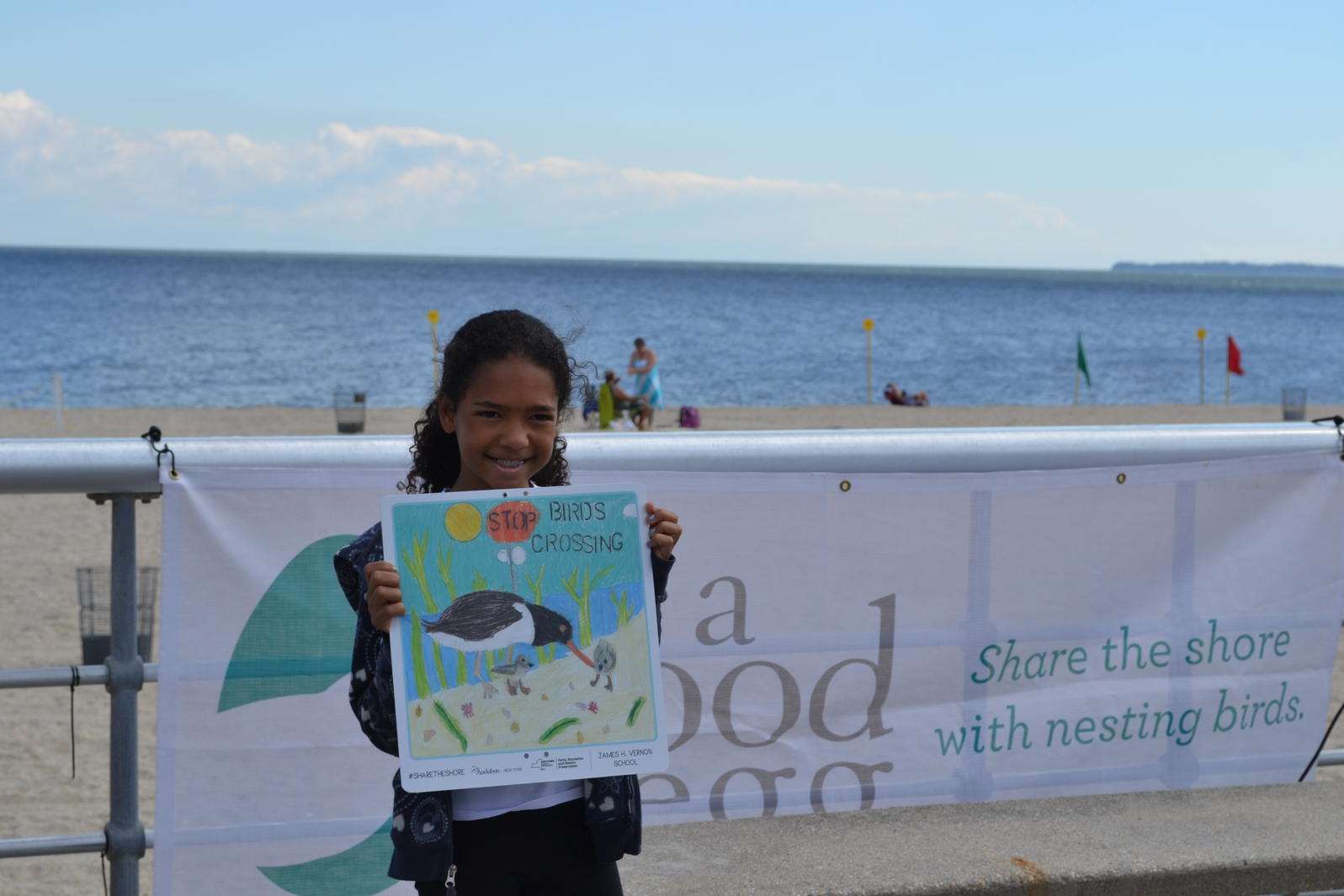Piping Plovers

Piping plovers, little shorebirds that lay eggs on sandy beaches, need everyone’s help. You may recognize them by a single black band around the neck, their orange-gold legs, or their melodious whistle. But because their bodies and their tiny speckled eggs are the color of sand, they are easily trampled or disturbed by unwary beachgoers. Paying attention to warning signage and fences erected to protect plover nests will help!

From March through August, the shores of the Long Island Sound are home to the federally threatened Atlantic Coast Piping Plover (Charadrius melodus) population. After spending the winter in the southeastern US and Caribbean, piping plovers migrate north, establish territories, and nest on flat, open areas of the beach. They lay eggs directly on the sand in shallow scrapes and males and females take turns incubating the eggs.

Biologists with the New York State Department of Environmental Conservation, the Connecticut Department of Energy and Environmental Protection, and other conservation organizations protect nesting areas with symbolic fencing and signage, but piping plovers also need to safely access the wrack line and other intertidal areas where they forage for small invertebrates. With light-colored feathers and eggs, piping plovers are well-camouflaged to avoid predators. Their plumage and small size eggs make it hard for people to see them, so beach-goers often don’t realize that they’re sharing the beach with nesting piping plovers. Pets on the beach, recreation near nests, and other types of human disturbance can threaten the survival of hard-working piping plover parents and their young.
With only a few hundred nesting pairs left in New York and Connecticut, piping plovers are state-listed as endangered in New York and threatened in Connecticut. In order for them to be able to safely nest, rest, and raise their young, piping plovers need beachgoers to do their part and share the shore with birds and other wildlife.

Learn more:
The Sound Facts series is adapted from Sound Facts: Fun Facts About Long Island Sound, a Connecticut Sea Grant publication.